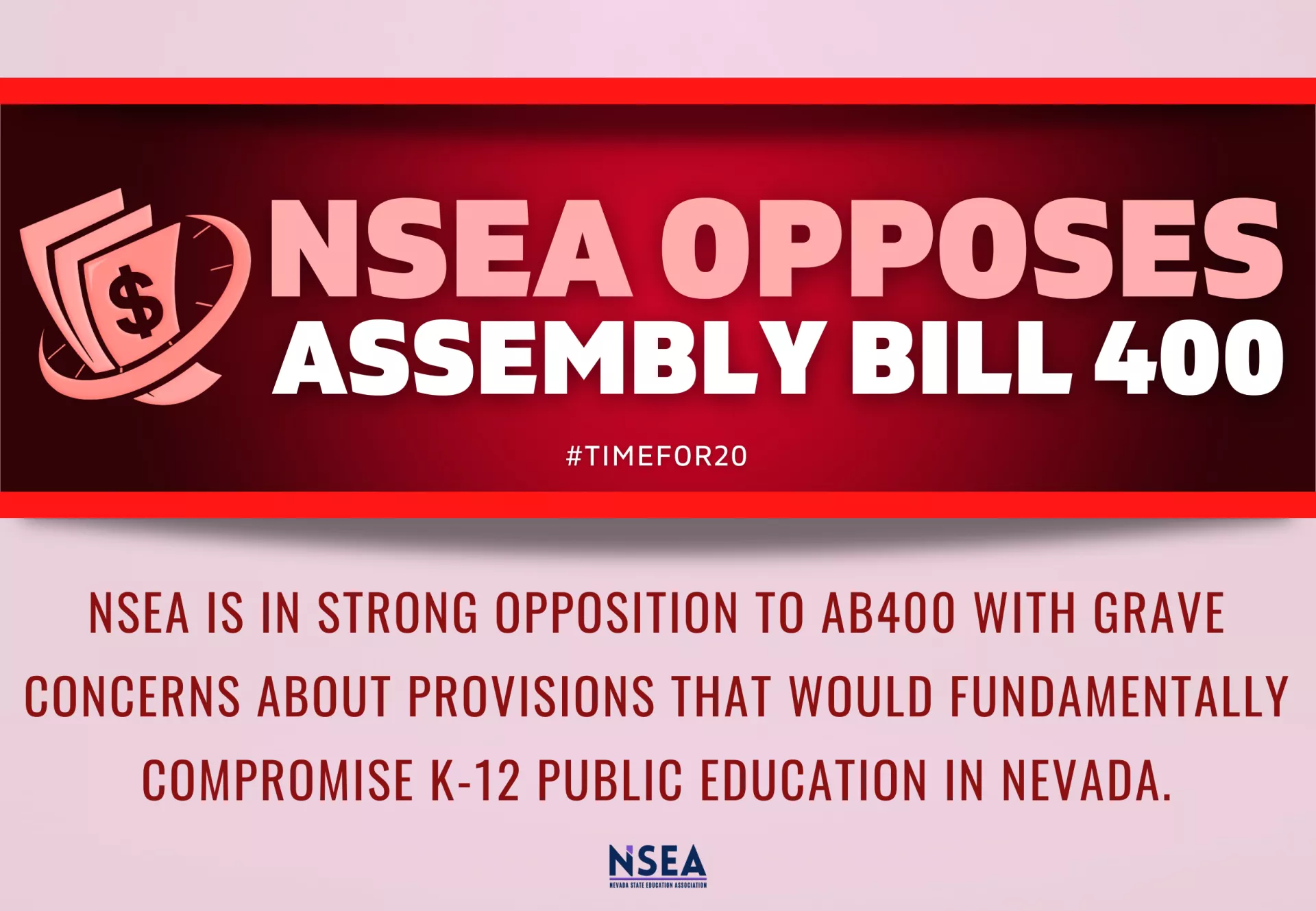Opponents of public education point to Nevada’s struggling schools to argue for more school “choice”, or in other words, the diversion of public money to private schools through private school vouchers. But the truth is Nevada’s schools struggle primarily due to chronic underfunding. This week, the National Education Association released their annual Ranking of the States report. Nevada once again ranked 48th in per-pupil funding for last school year. Politicians from both sides of the aisle have been quick to talk about “historic” funding for Nevada schools in previous sessions, yet Nevada remains stuck near the very bottom of states in education funding. This is why NSEA has been saying it’s a rainy day for Nevada schools
AB 400 would increase private school vouchers to .5% of the education budget over the next two years. This is equivalent to about a $20M annual increase. The bill then proposes to step up this funding to reach 5% of the education fund by 2032, meaning hundreds of millions of dollars per year would be diverted from public education. AB 400 expands voucher eligibility to 500% of the poverty level and creates the Office of School Choice with an executive director position to oversee this backdoor voucher scheme. Transferring more public tax dollars to private schools is the wrong answer and it always will be. Instead, Nevada should invest every available dollar to improve our public schools, available for every Nevada student. Resources are necessary to address the challenges our public schools face, including the crisis over overcrowded classrooms and educator vacancies. That’s why NSEA has been saying it’s Time for 20 – a 20% raise for every Nevada educator, $20/hour minimum wage, and classes with 20 students.
While charter schools are technically public schools, they have a similar impact of siphoning resources from school districts. For years, NSEA has cautioned the legislature about the growth of charter schools, especially given the unequal dynamics between charter schools and our traditional neighborhood public schools. Despite the passage of a growth management plan in 2019, charters expanded by 40% in just the last 5 years. The addition of transportation dollars to the charter system means even more resources into a duplicative system. Authorizing cities and counties to sponsor charter schools, when many cities and counties struggle to deliver the services they are currently responsible for is even more duplication and bad public policy
